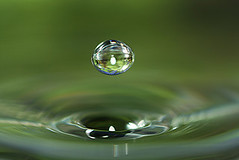A common complaint I hear from my clients is that they can't get through a night of sleep without a tight muscle waking them up.
Often it is a foot, calf, shoulder or neck muscle that is the culprit.
After waking up and moving around throughout the day, the pain goes away only to return during the night just like it did the night before.
This can have a dramatic impact on the health of the individual for obvious reasons.
Lack of healing and recuperative sleep can have many side effects:
Diminished cognitive function, lowered immunity to illness, susceptibility to injury and ultimately depression, just to name a few.
Here is a list of tools for combating night spasms but useful as well for general maintenance.
Click on any of the links to order these products online and have them shipped straight to your doorstep. Click on the tutorials to grasp a better understanding of how these products work.
Then make sure you schedule a massage!
1. Heating Pad: The heating pad is wonderful for the back and legs but can be a bit awkward for the neck or feet.
The goal is to increase blood flow because the affected area has tightened up and restricted this.
My recommendation is to heat your trouble spot for at least 20 minutes before falling asleep.
Another useful option is if you are to wake up at night with your issue agitated, try using the heating pad to calm the area, allowing you to return to sleep.
2. FROZEN/ROUND 16 oz. water bottles: This is an amazing tool for calming an overused or slightly injured muscle.
The key is to not overly agitate the affected area.
If the spot is in the hips or the IT Band the technique is to place the bottle on the floor and roll over it with your body weight.
The cold allows inflammation to be reduced and numb the active nerves while simultaneously rolling out knots or trigger points (see previous blogs on these subjects).
The bottles can also be rolled like a baker's rolling pin on the quadriceps.
Ice packs or frozen bags of vegetables are better options on other areas. Stop when numbness is achieved or it becomes uncomfortable.
An option as a final step is to immediately place the heating pad on the rolled out area. Special healing properties are achieved with this action.
Rotating between hot and cold several times can be especially beneficial.
3. Hot Water Bottle: As with the heating pad but a better option for the neck or feet.
4. Yoga Foam Roller: Here's a great tutorial. Foam Roller tutorial
5. Trigger Point Balls: These work really well for specific issues. With a little practice you can really find and release problematic areas. TP Ball tutorial
6. Thera Cane: An excellent tool for maintenance or when an area becomes achy. Here is a good tutorial on how to use one. How to use a Thera Cane
7. Tens Unit: Tens units are usually by prescription only. Prescriptions are very easy to obtain from your family doctor. Tens Unit training video
Optional is the microwaveable rice or corn filled neck pads that are commonly used but I don't recommend using microwaves for anything, especially heating food.
Access to a hot tub or a hot epsom salt and baking soda bath soak can be very beneficial periodically. Salt and Soda bath explained
Some of these items or gadgets can be found in your local drug store. Trigger Point Balls and foam rollers can often be found in a local jogging shoe store or any business that caters to athletes. You might want to check out the products yourself and talk to a sales representative.
Check out Fleet Feet, Chico CA
Check out Fleet Feet, Chico CA


![Reblog this post [with Zemanta]](http://img.zemanta.com/reblog_e.png?x-id=07c40ec5-3bb3-44f6-a0b4-8fb80458d80c)

![Reblog this post [with Zemanta]](http://img.zemanta.com/reblog_e.png?x-id=857b6d42-4f20-4fe6-9c6c-9766277126f8)

![Reblog this post [with Zemanta]](http://img.zemanta.com/reblog_e.png?x-id=52455654-66cd-430c-b4b6-2ea9430319ea)
![Reblog this post [with Zemanta]](http://img.zemanta.com/reblog_e.png?x-id=25f1e261-33e4-4339-adaa-57d1d8d087ea)